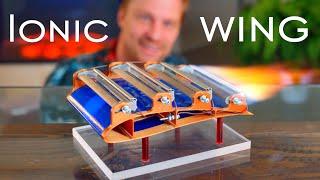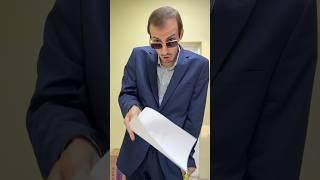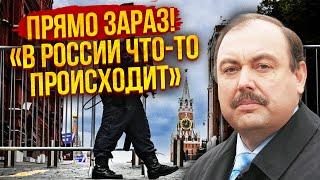
Designing A Self Propelling Ionic Thrust Wing
Комментарии:

Just subscribed to Curiosity with your link. Keep up the hard work.
Ответить
seems like if done right the wing could be made to work as a generator. booster for windmill it just seem like in a weightless containment it may have a drastic increase in rpm air movement removed and properly weighted, but this is not my field so just a thought.
Ответить
Thanks sir.
Ответить
I wonder if this could function as a solid-state aileron system for planes at a larger scale
Ответить
Would it help to be able to control the hertz?
Ответить
Ground breaking. Just need to solve the energy problem with nuclear fusion
Ответить
Just a wild thought
what if you built the thrusters inside the wing?
you want upward suction so maybe slat the upper wing to suck air down to the thruster and out the rear, probably under the wing for down ward thrust to move the wing up?
now thinking aerodynamics, a wing with less resistance, read that as holes or openings,
just mount the thrusters Under the wing, sort of like you are doing on top.
it may not sound like much but the reason the wing curves like it does on top is because
the air picks up speed as it flows over the wing material.
putting the thrusters on top, sort of inhibits that effect.
Now, how can you get your weight down for the power pack and hi voltage source?
I know the hi voltags source can be bought very small and light weight.
that brings us to the battery, so what if you try solar cells for daytime flight.
unless you can get a crazy light weight air frame were you can handle the battery weight.
Now PETER has put mini drone props and electronics on paper air planes, of the fold from 8.5 x 11 peice
of paper. His fly very well. if you can keep the weight down, yours might as well.
also there are foam airframe kits, pretty light and built to be a glider which I think would be more
wing lift.

This is clearly not just a step in the right direction it is creating the background experiments for entire aeronautical engineering courses to repeat your experiments and improve on designs in real time. This could one day lead to commercially viable ionic thrust wings on civillian aircraft.
Ответить
Can I give you a suggestion? To make this “wing” fly, the air flow must be faster on the underside of the wing, generating lift. and not over the top like you are doing. test with the propulsion of the lower part of the wing that I believe can improve the performance of your project. I thought it was really cool! congratulations!
Ответить
This is incredible. If I were 30 years younger I’d change fields. Genius stuff!
Ответить
Nice video, well done thanks for sharing it :)
Ответить
Nice video, well done thanks for sharing it :)
Ответить
Hey! Great video. Engineer here, just wondering why you measure airspeed and not thrust. Exit velocity is important, sure - but it’s only half the equation - literally. Thrust = mass flow * exit velocity. So if your ionic thrusters are moving a large quantity of air, even at a low exit speed, you could get enough thrust to build your ionic plane. Just a suggestion! Keep it up.
Ответить
You should be working for NASA that is cool stuff.
Ответить
i could see this being used in lighter then air craft easily i dont know if you have enough thurst to weight to compet with standard engines
Ответить
Wow, they've Really fished out the Atlantic ! A700 pounder winning a world class tournament?
Hell, growing up in the 60s several 1200 pounders were caught in the tournaments off Pt. Judith (Rhode Island).

This was so interesting. Thanks
Ответить
What if you don’t need batteries but put very thin solar panel as wing plate and make it run only with sun light.
Ответить
So, a few thoughts on material and aerodynamics as well as the overall design of the units attached to the wing.
First of all, I am not really sure anymore what you are printing in, but you might want to look into one of the expanding or foaming PLA filaments. They are already used in 3d flight model printing and can massively reduce the weight of a printed part while still being strong enough and also reducing the print time and cost.
The next point is the design of the thruster structures and how they attach to the wing. Aerodynamics are weird, so even a design that might at first look very aerodynamic could actually be creating turbulence and make it loose a lot of thrust. I would err on minimizing the crossections wherever possible. Maybe even not printing the struts that hold the thruster sections up at all, but only the joints and use thin carbon rods or tubing for the struts. That way a lot of mass could be shed and the number of struts in the later flight model reduced, creating less points for turbulence to form.
You also could print a "crincking" mechanism (like those things that turn paper into a zig zag pattern) to evenly and regularly shape the wire, recreating the even distribution of power you got with the serrated blade.
Other than that I recommend taking a look at the channels that feature 3d printing of rc planes and have been working on that. They have started to diverge quite a bit from traditional designs of struts and reinforcements as that is enforced mostly by limits of building a wing traditionally, which you don't have when 3d printing.
One thing I am wondering about is how the thruster affects lift. The faster flowing air over the top of the wing is after all a major reason for how planes achieve flight, so depending on just how effective the thrusters are and what kind of interaction there is by them pulling the air even faster over the top it might increase lift and reduce the demand on thrust by reducing the speed necessary to achieve sustained flight.


























